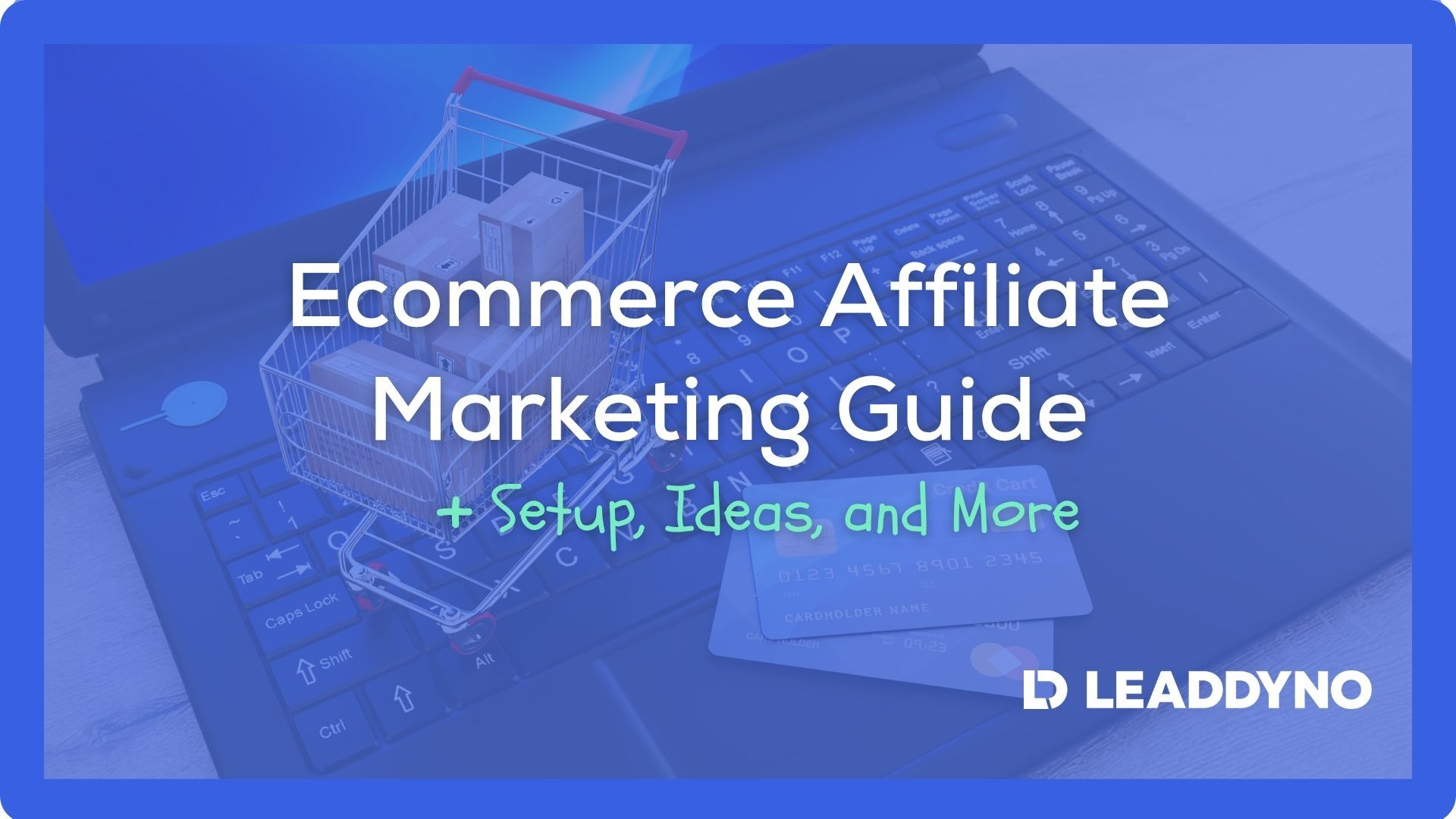The 3 Best Affiliate Commission Structures for Growth in 2025
Published:
September 24, 2025
Written by: Sarah Lasko
Published:
September 24, 2025
Written by: LeadDyno Admin

Book a Demo
See how LeadDyno can take your affiliate marketing strategy to the next level. Let’s set up a 1:1 demo to get your questions answered.
Download your FREE Affiliate Agreement Template
Oops! Something went wrong while submitting the form.
Thank you!
Oops! Something went wrong.
If you’re wondering how to get your affiliates to passionately promote your products and services, you should probably start by examining how you’re paying them. The affiliate commission structure you choose will greatly influence your affiliates’ motivation levels, and there’s no shortage of options to choose from.
Commissions are the carrots that you can use to attract and retain the best affiliate partners. You’ll need to make sure that these carrots are attractive enough to generate interest while still preserving your budget and allowing you to turn a profit.
There are multiple affiliate compensation models that you can choose from to achieve this balance, and there are even instances where you might want to mix several compensation models to satisfy your and your affiliates’ needs.
However, you won’t be able to make the best selection if you don’t understand all of the ins-and-outs. This article will explain how various commission structures work and provide some practical affiliate marketing tips that you can use to improve your program. Of course, it’s general best practice to leave room to increase your affiliate commission rates over time; you don't want to risk the consequences of having to reduce your commissions in order to sustain your program.
Ready? Let’s get started!
The 3 best affiliate commission models to incentivize your affiliates

Pay Per Sale (PPS)
Pay Per Sale, or PPS, is far and away the most common affiliate compensation model for affiliate programs. This is due largely to the fact that PPS is one of the easier compensation schemes to grasp.
How PPS works
As the name suggests, you pay a commission for each sale produced by one of your affiliate referral links, which you can calculate as either a percentage or a flat dollar amount. Additionally, you’ll have to decide whether or not you’ll be offering that PPS commission as a one-time payment or an ongoing one.
For eCommerce businesses where you’re mainly selling products, dispensing one-time rewards is the norm. For SaaS and subscription services, however, an ongoing payment system often makes more sense. Subscription commissions don’t necessarily have to be indefinite though, and you’re free to set term limits if that works better for your program and budget.
Why is the Pay-Per-Sale model popular?
Brands and affiliates alike love PPS as an affiliate compensation model, because it’s straightforward. Beyond its simplicity, this compensation model also offers several benefits to the brands that use it. There are four specific advantages you should keep in mind when considering PPS as an option:
- It’s flexible and scalable: Whether your brand is large, small, or in between, PPS is helpful for scaling as your business grows or your need lessens.
- It can help boost productivity: As you analyze your numbers, you’ll start to see where you can make subtle improvements to boost sales, increase revenue, and lower costs.
- It has excellent ROI potential: There’s little cost upfront since you only pay when a sale is made (and revenue is generated), so your ROI on PPS should be fantastic.
- It generates more long-term business: PPS focuses on bringing in paying customers, which has a greater chance of yielding repeat sales than low-quality leads with only tepid interest in your brand.
The PPS commission model is suitable for nearly every affiliate marketing program, given that, ultimately, every business seeks to generate more sales. There are a few details you’ll want to keep your eye on, though, to get the most bang for your buck.
Stuff you should watch for
Before you go all-in with a PPS compensation model, make sure that you’ve considered the following points:
- Start by calculating how much you’re willing to spend and creating a set budget.
- Performance is everything, so you’ll need to arm your affiliates with the training and tools that they need to consistently bring in new sales.
- Affiliate link tracking is vital to PPS compensation, so be certain you have an accurate system in place to tally those numbers.
Watching out for these potential pitfalls and employing best practices will give your brand an advantage, should you choose to go with a PPS commission scale for your affiliates.
{{blog-cta}}
Pay Per Lead (PPL)
PPS might be the most popular affiliate commission structure, but it’s not the only one businesses use in affiliate marketing. Another model with strong potential is Pay Per Lead (PPL).
How PPL works
With PPL, you compensate affiliates for each conversion action they generate. These actions go beyond sales and might include newsletter signups, demo requests, free trial registrations, or downloads of a whitepaper. You decide the desired action(s) in advance, and affiliates earn a commission each time a referred customer completes that action.
Why is the Pay-Per-Lead model effective?
For companies running B2B affiliate programs with long or complex sales cycles, generating high-quality leads can be just as valuable as making immediate affiliate sales. PPL helps brands fill their pipeline while rewarding affiliates for marketing efforts that contribute to long-term revenue growth.
This commission structure offers three main advantages:
- Strong affiliate appeal: The PPL model is great for drawing interest from affiliates, because they don’t have to drive the entire sale or wait for your sales team to close the deal to get paid. Easier, faster payouts means more faithful affiliates!
- Scalable lead generation: Businesses can grow their affiliate program by clearly defining actions that support their marketing goals.
- Flexibility: You can reward affiliates differently depending on the type of lead and its value to your program.
What to watch for
PPL requires close monitoring of affiliate performance. Not every lead translates into a paying customer, so you’ll need safeguards to help make certain that affiliates are creating genuine conversions. Strong tracking tools and affiliate fraud prevention measures are important for keeping this commission model profitable.
Pay Per Click (PPC)

The Pay-Per-Click (PPC) model is another affiliate commission structure used in affiliate programs, though it’s less common than PPS or PPL.
How PPC works
With Pay Per Click, affiliates earn a commission every time someone clicks their affiliate link and lands on your website. Payment is tied only to the click and not to whether that visitor becomes a new customer, completes a purchase, or takes another action.
Why is the Pay-Per-Click model useful?
For businesses trying to increase brand awareness or test new marketing campaigns, PPC can help drive traffic quickly. Affiliates are incentivized to share links across platforms, helping expand your reach and visibility.
This model’s benefits include:
- Immediate traffic growth: Affiliates can bring in visitors right away.
- Easy to understand: Affiliates know they’re rewarded for every click, which makes participation simple.
- Top-of-funnel value: PPC can complement a larger affiliate marketing program by building awareness and feeding other commission structures.
What to watch for
Because PPC doesn’t require a purchase or conversion, it carries a higher risk of low-quality traffic and click fraud. To use it successfully, you’ll need strong monitoring, clear affiliate program guidelines, and a reliable tracking system. PPC is best used alongside PPS or PPL models, instead of as a standalone commission type.
Tips for managing affiliate incentives and program payouts

Two final points you’ll want to keep in mind before setting up your affiliate commission structure are:
- Any additional incentives for your affiliate partners
- How you deliver all your commission payouts
Extra incentives are a great way to motivate your affiliates further. You can achieve this easily by offering a higher commission rate or boosting the commission percentage for affiliates who hit specific sales or revenue benchmarks. Some affiliate marketing programs even reward new affiliates with a short-term bonus to encourage early activity, while others focus on rewarding affiliates who have shown long-term loyalty. A non-monetary approach can also work. You can incentivize affiliates by giving them your products or by creating exclusive collaboration opportunities with influencers.
All in all, you have plenty of flexibility to experiment with different commission types and bonuses to see what works best for your brand’s affiliate marketing program. Some companies even explore offering a lifetime commission or recurring commission model for subscription-based services to keep affiliates invested in generating ongoing customer relationships.
As for payment terms, there are three things you’ll need to work out:
- Payment threshold: The minimum dollar amount an affiliate has to earn before triggering a payout. Setting this appropriately helps reduce the admin burden of small, frequent payments.
- Payment frequency: How often you pay affiliates who meet the minimum threshold. This could be biweekly, monthly, or quarterly, depending on what works best for your business.
- Payment method: How you deliver funds to your affiliates. Many businesses use PayPal, bank transfers, or direct deposit for speed and convenience.
With those points resolved (and your chosen commission structure determined), you’ll be ready to attract and retain top-performing affiliates, while building a program that grows with your company.
Build a strong affiliate commission structure with LeadDyno
Your affiliate marketing strategy should aim to attract high-value affiliates and keep them engaged. And the best way to make sure of that is by utilizing one important tool: money. Using money strategically will help keep affiliates active and satisfied while also bringing in new potential affiliates through word-of-mouth on your company’s reputation. That’s why it’s important to fully understand the logic behind each affiliate commission structure; you won't be able to feel confident about your affiliate marketing strategy until you can feel confident that your commission payouts will be consistent and robust.
But knowing the right commission structure is only half the battle. To succeed, you need to utilize these models in a way that helps improve affiliate performance, and supports long-term relationships with your affiliate partners.
That’s where affiliate software like LeadDyno comes in. With LeadDyno, companies can design a variety of flexible commission types, offer recurring or even lifetime commission options, and set the right commission rate or commission percentage for different products. The platform also makes it easy to manage payments, reward new affiliates, and recognize top-performing partners so that your program continues to grow revenue while rewarding affiliates fairly.
From automated affiliate links to mass commission payouts, LeadDyno helps you put all the pieces of your affiliate program into place with ease, so you can put all your energy into growing your business.
Download your FREE Affiliate Agreement Template
Oops! Something went wrong while submitting the form.
Thank you!
Oops! Something went wrong.
.webp)
Written by:
Sarah LaskoSarah is an NYC-based business, technology, and arts writer who specializes in B2B writing for thriving SaaS tech apps. You can view her portfolio here.
Published on
This is some text inside of a div block.
Written by:
LeadDyno AdminLaunch your affiliate program with confidence thanks to our 30-day free trial. Learn more...
Published on
This is some text inside of a div block.
Written by
LeadDyno AdminLaunch your affiliate program with confidence thanks to our 30-day free trial. Learn more...
Published on
This is some text inside of a div block.
.svg)
Start a Free Trial
30 days free · Full Access
Cancel anytime
You might also be interested in...
Get Started Today
Launch your affiliate program with confidence thanks to our 30-day free trial. Begin building a program that delivers results.
Start Free Trial
30 Days Free





